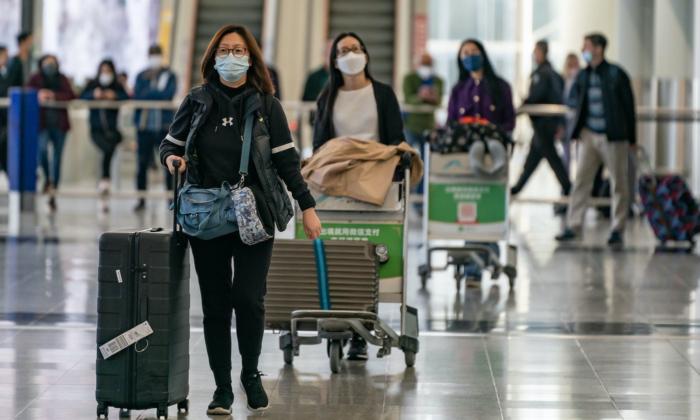“I hope there’s no more pathogenic strains,” Lin stated. “But I think the likelihood right now is much higher than before.”
Specifically, Lin said that elevated levels of smoke and industrial pollution in China have resulted in poor immune systems among the Chinese population and a significant prevalence of respiratory diseases, such as Chronic Obstructive Pulmonary Disease, or COPD. This increases the chances of COVID-19 mutating into a more deadly strain in the Chinese population, he explained.

Consequently, as China opens its borders, Lin said it’s probable that new waves of COVID-19 will spread like wildfire worldwide.
China Lifts Travel Restrictions
For the past three years, different societies have implemented varying COVID-19 strategies, from virus elimination to a slow the spread approach. But as measures to contain the virus failed and dominant strains proved more mild, most returned to a “business as usual” approach. China, however, has been a stark exception.
Instead of easing restrictions as more transmissible COVID-19 variants emerged, Beijing relentlessly pursued its zero-COVID policy. Among other regulations, that included mass testing, lockdowns of businesses and schools, and forced isolation of citizens in homes or government facilities.
As a result, government restrictions destroyed people’s livelihoods. Now, China opening its border is the first chance many will have to “escape.”
“If they already have a passport, they have the financial [means], they will try very hard to leave China. I think there will be a lot of Chinese who will want to leave China with this narrow window open right now,” Lin explained. And that mass exodus will prove challenging for controlling the spread of new variants that may have emerged in China.
“The global society definitely needs to pay … serious attention [to the exodus]. Because many people will carry the pathogens to different countries and different countries definitely need to prepare if more transmissible variants emerge from China, and then [spread] widely in other countries.”
Plus, increased transmissibility is only part of the problem. Lin explained that once a virus hits a certain level of transmissibility, it naturally looks to enhance its pathogenicity, or how deadly it is.
Possible Solutions
According to Lin, the best way to address the spreading of possible new variants from China is to follow the example of the Japanese government.“The Japanese government has been testing passengers from China [and] putting people in seven days quarantine if they test positive for COVID. I say this is essential,” Lin explained.
Lin added that implementing the above strategy is especially important for countries that neighbor China, as they are more likely to see people fleeing the ruling Chinese Communist Party’s (CCP’s) oppression.

Furthermore, Lin said, testing passengers from China has the secondary effect of actually detecting what COVID strains that are, and have been, circulating in the country. To date, obtaining reliable sequencing data has proven challenging.
“Can you really trust what the Chinese government said about its sequencing data? I doubt it,” Lin said.
As countries like Japan and Italy screen Chinese passengers and assemble sequencing data, Lin believes a more reliable data set will emerge.
Protests Lead to Openings
As part of its forced isolation practice, the CCP locked, and in some cases, welded citizens inside their homes. That practice proved deadly when a fire broke out in an apartment complex in China’s far-western Xinjiang region.Residents and rights groups blamed the central government’s zero-COVID policies for blocking people from escaping. They further argued that the policies hampered rescue efforts and that the death toll from the fire was much higher than officials reported.
Following the fire, Chinese citizens took to the streets in mass to protest the CCP’s draconian lockdowns.
He said he believes the CCP decided on the change in strategy because zero-COVID wasn’t the best option anymore given its failure to contain the virus and its economic and social impact.
“The explosion of cases in China is not due to the lifting of COVID restrictions. The explosion of cases in China has started long before any easing of the zero-COVID policy, and I think that it’s very important to recognise that,” WHO Emergencies Chief Mike Ryan said.





